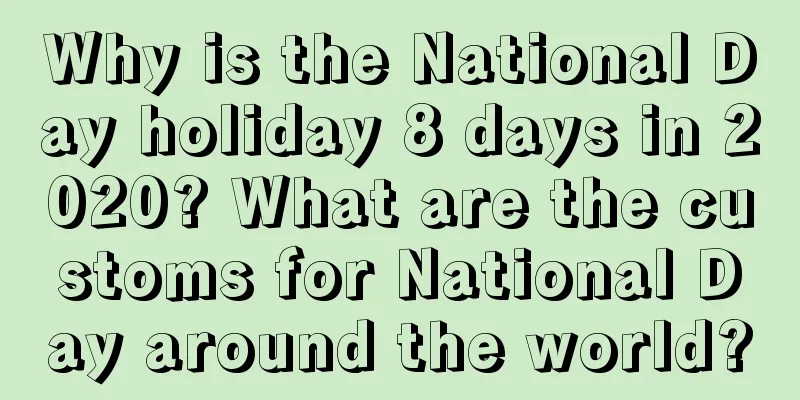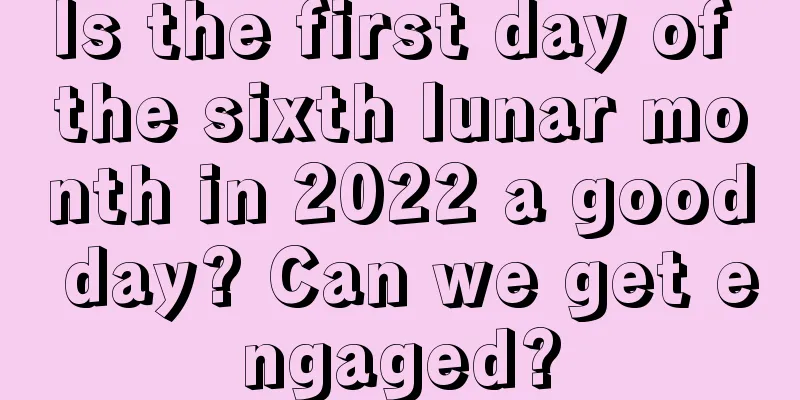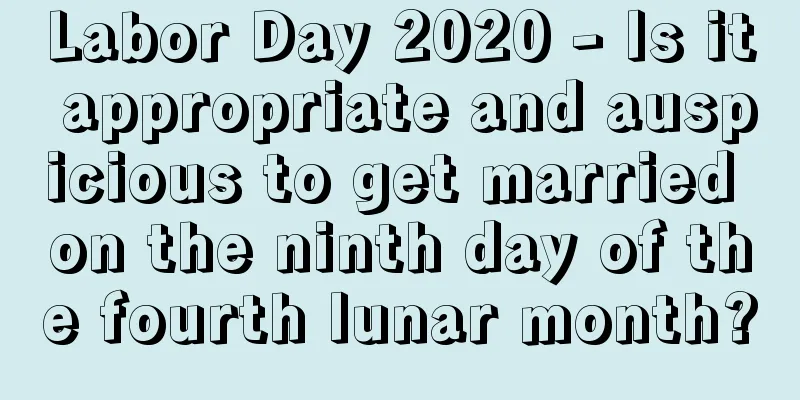Why is the National Day holiday 8 days in 2020? What are the customs for National Day around the world?

National Day is the most important political holiday in a country. Let us understand why the National Day in 2020 is 8 days off? What are the customs of National Day? As the eighth month of the lunar calendar arrives, the autumn atmosphere becomes stronger. For people who value traditional culture, what will the eighth month of the lunar calendar in 2020 be like? Please visit Mr. Shui Mo's website for a more detailed introduction.Why is the National Day holiday 8 days in 2020?Affected by the "leap April", the corresponding dates of this year's lunar festivals such as the Dragon Boat Festival, Chinese Valentine's Day, and Double Ninth Festival in the Gregorian calendar have been postponed by 18 days compared to last year.This year, National Day and Mid-Autumn Festival will fall on the same day. National Day and Mid-Autumn Festival: October 1st to 8th are holidays, a total of 8 days. Work will resume on September 27th (Sunday) and October 10th (Saturday). What are the customs for National Day around the world?Germany: Each continent takes turns to celebrate unification <br /> Germany's National Day is called "Unification Day" to commemorate the official unification of East and West Germany on October 3, 1990, after more than 40 years of division. On October 3 last year, nearly one million people from all over Germany gathered in front of the Brandenburg Gate, the symbol of German reunification, to celebrate the 14th anniversary of reunification.According to convention, the capital of the state that serves as the President of the Federal Senate in turn each year automatically becomes the main venue for that year's Unification Day celebrations. Since the mayor of Berlin served as the President of the Federal Senate last year, the capital Berlin became the main venue for the Unification Day celebrations for the first time since reunification. Last year, the mayor of Berlin and the president of Germany both delivered speeches at the celebration meeting. German Chancellor Schröder, Vice Chancellor and Foreign Minister Fischer, the President of the Bundestag and representatives of the federal states also attended the meeting. However, at the 10th anniversary celebration of German reunification held in Dresden, the capital of Saxony in 2000, former Chancellor Helmut Kohl, a hero of German reunification, did not show up due to a political donation scandal. Although Berlin was not the main venue that year, 250,000 people still participated in the celebrations held around the Brandenburg Gate and the Reichstag in the city center. The symbol of unification, Brandenburg Gate (Brandenburger Tor), is located at the intersection of Unter den Linden and 17th June Street in the center of Berlin. It faces west and is one of the 14 city gates of Berlin built in 1753 by order of Friedrich William I, King of Prussia, who established Berlin as his capital. It was named after Branden, the birthplace of the king's family. After unifying the German Empire, Friedrich William II rebuilt the gate in 1788 and completed it in 1791. When East Germany built the Berlin Wall in August 1961, the Brandenburg Gate at the junction of East and West Berlin became part of the Berlin Wall and was designated as a military restricted area. UK: The country sets a "birthday" for the Queen In the constitutional monarchy of the United Kingdom, the National Day is set on Queen Elizabeth II's "birthday" - the second Saturday of June every year. In fact, the Queen was born on April 21st. The reason why the British government set such a "birthday" is that the climate in early summer is warmer and more pleasant, and there are more sunny days. When the Queen's father, King George VI, was on the throne (1936-1952), he also celebrated his birthday in June, although his actual birthday was December 14. The previous two kings, George V and Edward VIII (reigned 1910-1935 and 1936 respectively), were both born in June and were therefore able to receive congratulations from the entire nation on their actual birthdays. Compared with the American Independence Day, the British Queen’s birthday inevitably carries the connotation of the royal family’s “selfishness”. In addition, many people call for the abolition of the monarchy, so the British National Day is naturally much more low-key and not as grand and extravagant as that of the United States. If calculated by the time of founding of the country, England, which was unified in the 10th century, completed the merger with Wales, Scotland and Northern Ireland in 1536, 1707 and 1921; the name "United Kingdom of Great Britain and Northern Ireland (abbreviated as 'United Kingdom')" was not adopted until 1927. An important part of the Queen’s birthday celebrations is to confer titles and honors on celebrities from home and abroad. The list of recipients is drawn up by the government and the royal family and announced on the Queen's official birthday. Most of the people on this year's list still come from the London and national governments, the military, and supporters of Labour government policies, of which 36% are women. The recipients of the highest honorary title "Knight" are still mostly elites from Oxford and Cambridge, with only a few exceptions, such as Anita Roddick, the founder of the cosmetics store "Body Shop". This year the government claims that 52% of the recipients were nominated by the public. France: National Day military parade becomes a weapons exhibition July 14th is France's National Day. On July 14th this year, hundreds of thousands of French people and tourists crowded along the Champs-Elysees in Paris to watch the grand military parade. Despite being shot in the back by a far-right assassin last year (fortunately he missed), President Chirac, as usual, reviewed the armed forces in his car on the Champs-Elysées this year for the ninth time since his election in 1995. The French National Day is called "Bastille Day" to commemorate the Parisian revolution in which the people captured the Bastille. However, when the feudal dynasty was restored in 1814, this day was declared "National Humiliation Day" and "Murderer's Holiday". It was not until June 1880, 10 years after the restoration of the Republic, that the French Parliament officially passed a decree to designate July 14 as a National Day. Bastille Day is the most important public holiday in France, and the whole country has a day off on that day. On the eve of the festival, many families hang colorful flags, buildings and public places are decorated with colorful lights and garlands, and open-air stages decorated with red, white and blue curtains are set up at street intersections, with orchestras playing popular folk music on the stage. On the evening of the 13th and 14th, revelers flocked to the streets, wearing national flag ribbons around their necks and dancing to the cheerful Camanho and other folk dances to the music. France holds a military parade on the Champs-Elysées every year. On the morning of July 14, the streets were under martial law. A fleet of air force planes flew over the Arc de Triomphe and the military parade began. The fighter jet formation spewed out red, white and blue smoke, like a huge national flag spreading out in the air. As the planes passed over the reviewing stand in the Place de la Concorde, the army and navy columns began to salute the president. At night, bright red, white and blue searchlight beams crisscrossed and swayed above the Arc de Triomphe, illuminating the huge national flag in the arch; the lights on the ground and the colorful fireworks in the sky complemented each other; the sounds of firecrackers, music and cheers merged into one. France's annual Bastille Day celebrations use 50 tons of gunpowder and 1 billion fireworks; just half an hour of fireworks costs about $3.5 million, so the cost of the entire festival can be imagined. Compared with the cheerful and cheerful Independence Day parade in the United States, the French Bastille Day parade has a very strong military flavor. On September 7, a columnist's visit to France was published in the Sunday edition of The Washington Post. He wrote: "We witnessed the Bastille Day parade on the Champs Elysees in Paris. Although I had heard about what would happen in advance, I was still surprised to see it with my own eyes. The French celebrated their "Independence Day" in an extremely militaristic way: rows of tanks and other huge armored weapons paraded through the streets. This kind of scene can usually only be seen in the central squares of some Asian countries. Australia: Celebrating the arrival of first prisoners On January 26, 1788, Arthur Phillip led 11 small boats of the "First Fleet" to Jackson Port in Sydney and anchored. The ships carried 780 exiled prisoners, and about 1,200 sailors and their families. These white people set foot on Australian soil in a mighty force, and Philip became the first governor. In the following 80 years, a total of 159,000 British prisoners were exiled to Australia, so this country was also nicknamed "the country created by prisoners." January 26th became Australia's founding anniversary, also known as "Australia Day". Today, on January 26th every year, various large-scale celebrations are held in major cities across Australia because this is their most important festival. One of these is the citizenship ceremony, where thousands of new citizens of the Commonwealth of Australia take an oath: "From this moment on, in the name of God, I swear that I will be faithful to Australia and her people, share their democratic beliefs, respect their rights and freedoms, and uphold and obey the laws of Australia." Of course, people have the choice of whether or not to say the oath "in the name of God." Since January 26, 1949, approximately 3 million people have declared themselves Australian citizens in this way. The ferry race in Jackson Harbour in Sydney is also an annual event, symbolizing the arrival of the first batch of British prisoners. This year the Australia Day Committee has also organised a new programme - the Surfing Invitational, also held at Sydney's Jackson Harbour, where anyone who has reached an athlete's level can sign up to participate. Australia, the sixth largest country in the world and the only country that owns an entire continent, gets its name from the Latin word “Terra australisincognita”, which means the unknown southern continent. It is generally believed that the ancestors of Australian Aborigines began to settle in Australia about 40,000 years ago. The first white person to arrive in Australia was the Portuguese. He explored the eastern part of the Australian continent from 1521 to 1532. However, it was not until 1616 that the Dutch began to truly explore Australia, covering about one-third of the land. On April 29, 1770, British navigator Captain James Cook led the sailing ship "Endeavour" to Botany Bay on the east coast of Australia, then sailed north along the east coast and raised the British flag on the Cape York Island. Cook declared that the entire eastern part of the Australian continent belonged to King George III of England. On February 6, 1785, in accordance with the declaration issued by Captain Cook, the British government named the eastern part of Australia the "Colony of New South Wales", thus beginning the history of Australian colonization. In recent years, Australia's national day activities have placed great emphasis on the important characteristic of "multiculturalism makes up Australia", that is, residents of all ethnic groups share traditional customs, culture, language and religious beliefs. But there are also many Aboriginal people who do not think Australia Day is worth celebrating. It was from this day that their ancestors lost their land, culture and social status. Regardless, Australia remains one of the most successful countries in building an inclusive, multicultural society. This core Australian value is deeply rooted in the hearts of the people. Japan: The National Day here is quiet <br /> Although Japan has a "National Foundation Day" - February 11, because according to legend, Emperor Jimmu unified Japan on this day in 660 BC (formerly known as the Era Year, abolished after the war and restored in 1966), Japan's "National Day" is the same as that of the United Kingdom, and is also a national holiday on December 23, the birthday of the constitutional monarch Emperor Akihito. The traditional way for the Japanese royal family to celebrate the Emperor's birthday is for the Emperor and Empress to accept congratulations from the people in the Imperial Palace on that day. As for folk activities, it is hard to say. Japan has many festivals, and even companies can set their own company celebration day. However, the most important ones among the people are New Year's Day and the Ollantaytambo. According to Ms. Aiko Inoue of the Consulate General of Japan in Shanghai: For the Japanese, National Day just means a one-day holiday and few people would think of celebrating it; of course, some people would visit the shrine. In 645 AD, Japan carried out the Taika Reform based on the Tang Dynasty's Ritsuryo system and adopted a feudal centralized state system with the emperor as the absolute monarch. At the end of the 12th century, Japan entered a military feudal state in which the samurai class held real power, known as the "shogunate" period, and the status of the emperor was once threatened. In 1868, after Japan's doors were forcibly opened by Western gunboats, Japan's reformists implemented the "Meiji Restoration", abolished the feudal separatist shogunate system, established a unified centralized state, restored the emperor's rule, and thus began capitalist reforms. After Japan's defeat in World War II, it implemented a new constitution in May 1947, transforming itself from an absolute emperor system to a parliamentary cabinet system with the emperor as the symbol of the state. Today the emperor is no longer considered a god in Japan, but remains a symbol of the nation. The tradition of the Emperor's birthday as a national day remains unchanged. Argentina: No fireworks, just banging pots and pans On May 25, 1810, the "May Revolution" against Spanish rule broke out in Buenos Aires, overthrowing the governor and establishing the first government committee. After Argentina gained independence on July 9, 1816, May 25 was designated as the "May Revolution Day of 1810", that is, National Day. On May 25 this year, the Argentine people, who were suffering from the economic crisis, took to the streets as usual to commemorate their own "May Revolution." Their celebration was unique to the country: giving speeches, banging pots and pans, waving flags and banners, and cursing politicians. Some women dressed in traditional clothes walked through the crowd handing out bananas tied with blue ribbons that read: "The One Who Knows Everything." According to local people, these bananas imply that the current government is a "banana government" that is corrupt and incompetent. Meanwhile, incumbent President Rodrigo Duhalde gave a speech to an indifferent audience at the routine celebration, which was responded to by polite but weak applause. Argentina is known as the "granary and meat storehouse of the world" and is the first country in South America to become independent. In 1535, Spain established a colonial outpost here. Since the colonists found that the local Indians wore many silver ornaments, they thought that the area was rich in silver, so they named it "La Plata" (both "La Plata" and "Argentina" mean "silver"). In 1776, Spain established the Viceroyalty of La Plata with Buenos Aires as its capital. In 1812, the Argentine San Martín led a large-scale armed struggle against the Spanish colonial army and eventually won. Four years later, Argentina officially became independent. Brazil: Tighten your belt for National Day September 7th is the Independence Day of Brazil, the largest country in Latin America. In 1822, Pedro, Prince of Portugal and Regent of Brazil, declared Brazil's independence on this day. In the past, a grand military parade was held in the capital Brasilia every National Day. However, since last year, due to tight military spending, the annual National Day parade has neither had aircraft formations nor any military equipment displays. Except for four armored vehicles, the entire convoy consisted of police cars and fire trucks. In order to save fuel, the parade replaced the aircraft formation with an air force soldier formation, and the army vehicle formation with police cars and fire trucks. Other cities in Brazil also celebrated the National Day in various ways, and the rhythmic, unrestrained and passionate samba dance, the quintessence of the country, was naturally indispensable. Brazil has an area of 8.51 million square kilometers, ranking fifth in the world. It does not have large deserts or permafrost zones commonly seen in other large countries. Instead, nature has endowed Brazil with dense virgin forests, vast natural pastures and rich underground treasures. It is truly blessed by nature. On April 22, 1500, Portuguese navigator Pedro Cabral came to Brazil, named this place "Holy Cross" and declared it to be owned by Portugal. As the colonists cut down rosewood in Brazil on a large scale, the word "rosewood" (Brazil) gradually replaced "Holy Cross" and became the name of Brazil, and it is still used today. Portugal established a colony in Brazil in the 1630s and appointed its first governor in 1549. When Napoleon invaded Portugal in 1807, the Portuguese royal family moved to Brazil for a time. After the Portuguese royal family moved back to Lisbon in 1820, Prince Pedro remained as regent. Two years later, he declared independence and established a new empire. In 1889, the Federative Republic of Brazil was established. In 1891, the country's name was changed to the United States of Brazil, and in 1968, it was changed back to the Federative Republic of Brazil. |
>>: What does National Day commemorate? How to celebrate National Day in 2020?
Recommend
Analysis of the auspicious and unlucky events for the 14th day of the seventh lunar month in 2020
Analysis of the auspicious and inauspicious thing...
What are the taboos of Laba Festival? What is the custom of not going back to one’s parents’ home on Laba Festival?
As the saying goes, "Laba Laba, freeze your c...
The 13th day of the 11th lunar month in 2017 is a good day?
In the eleventh month of the lunar calendar, whet...
Is the ninth day of the first lunar month in 2019 an auspicious day?
The ninth day of the first lunar month is the birt...
Where is the God of Wealth on the second day of August 2018?
According to the Chinese lunar calendar, August i...
Is Qixi Festival a traditional Chinese festival? What are the taboos on the Chinese Valentine’s Day?
Qixi Festival is one of many festivals, but not ev...
Is it a good idea to move house on the 13th day of the third lunar month in 2018? Can I move into a new home?
The third month of the lunar calendar is the last...
Can I pray on the 14th day of the sixth lunar month in 2018? What are the fortunes on that day?
Praying for blessings is a way for believers to ex...
What is the fortune of a girl born on Laba Festival in the Year of the Pig in 2019? Is her personality good?
Introduction: Children born at different times hav...
Is it suitable to go back to my parents’ home on the twelfth day of the lunar year? What are the taboos on the twelfth day of the lunar year?
The first month of the lunar calendar is the first...
What is the lunar date of the 2019 Little New Year's Eve? Is there a holiday for the 2019 Little New Year's Eve?
Introduction: Xiaonian is an important traditional...
Is New Year’s Day a good time to travel far? What do you eat on Chinese New Year’s Day?
Different days have different aura and feng shui, ...
Check the lunar calendar for July 17, 2017. Is it a good day?
1. What day is the 17th day of the seventh lunar ...
Can I open a business on August 17th of the lunar calendar in 2017? Is it a good time to open a new company?
August always brings people the sweet scent of os...
Is November 17th of the lunar calendar in 2019 suitable for opening companies and shops?
Is November 17th of the lunar calendar in 2019 su...









